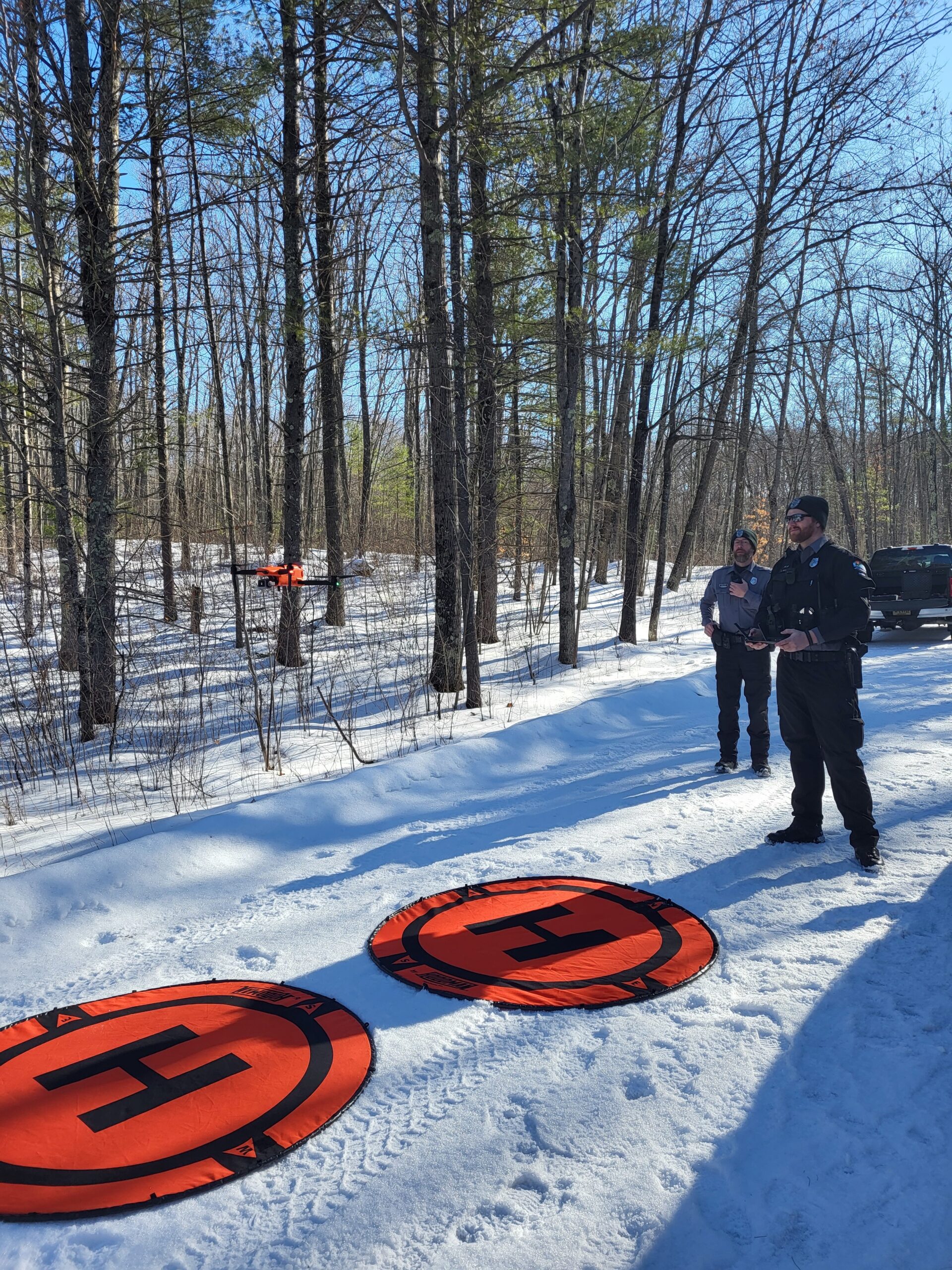An article from WWA’s Words From The Wardens.
This article originally appeared in Wisconsin Waterfowl Association’s November, 2023 eNewsletter.
By Lt. Bryan Lockman and Policy Officer Matthew Wehn
During the recent early goose season, my morning patrol led to a small Portage County lake where we spotted a group of goose hunters who had launched a drone to help them locate geese that landed on the opposite side of the lake and not in their decoys.
It is important folks know this is not a legal activity.
I was on patrol that morning with Warden Josh Litvinoff, a member of the Wisconsin River Warden Team I supervise. We weren’t sure what we were going to encounter as we made our way to the hunting party. However, it turned into an educational contact more than anything. Seems the drone was just purchased, and the hunter was excited to use it.
We explained to the hunters that drones, or what are officially known as unmanned aircraft systems, are federally regulated and, like aircraft, are not allowed for hunting purposes in Wisconsin.
The goose hunters had no idea. This led me to join with our division’s Policy Officer Matthew Wehn in this joint column to you.
We figured the hunting party would not be alone in their jaw-dropped reaction to learning their new hunting tool could not be part of their hunting plan. And in recent weeks, we have fielded hunter questions about drone usage.
We are here to provide WWA’s members with an easy-to-understand summary of the laws around drone use. Our goal is to avoid having to take enforcement action like that morning at the Portage County lake. While wardens, in certain circumstances, can exercise discretion, the law related to hunting with an aircraft is a misdemeanor crime which can include penalties of fines, jail and loss of privileges.
WHAT HUNTERS NEED TO KNOW ABOUT DRONE OPERATION
Drones fall under federal regulations when it comes to licensing, their use and operation under the Federal Aviation Agency and in compliance with the federal Airborne Hunting Act administered by the U. S. Fish and Wildlife Service.
That’s a lot to take in. Let’s break it down.
Our Wisconsin statutes prohibit aircraft, which includes drones, from being used in hunting. The statutes define ‘hunt’ or ‘hunting’ as any of the following: shooting, shooting at, pursuing, taking, capturing, or killing or attempting to capture or kill any wild animal. A hunter does not need to shoot a gun to have been hunting.
SCOUTING: We get a lot of questions about scouting before the hunting seasons launch. The use of the drone for scouting is not specifically prohibited. But there are conditions. One is the use of the drone cannot be seen as affecting the animals’ behavior – meaning you cannot flush them or cause them to move where they don’t want to move. That’s harassment and is prohibited. Additionally, the scouting behavior cannot be part of the hunt. If the drone operator or hunting party are using real time information from an aircraft to go directly where the animals are located, that would be hunting and not scouting.
If on public lands, be aware there may be other restrictions related to the use of aircraft. If you use a drone with lights at night for scouting, the drone must be used in honor of shining restrictions.
 RETRIEVAL: And then there’s retrieval. This is where it gets a bit murky because it is a case-by-case assessment. If a warden is investigating if a drone was used to hunt, they must consider all the facts and circumstances to determine if a violation has occurred.
RETRIEVAL: And then there’s retrieval. This is where it gets a bit murky because it is a case-by-case assessment. If a warden is investigating if a drone was used to hunt, they must consider all the facts and circumstances to determine if a violation has occurred.
Here are some conditions a warden may consider when investigating whether the aircraft was used for hunting (illegal) or retrieval (legal). Please do not consider this list as the only conditions a warden may consider. Again, it’s a case-by-case assessment.
- Has the hunter made a reasonable but unsuccessful attempt to find the animal without the drone?
- Can the hunter provide a reasonable explanation of why they believe the hunted animal is dead and not only injured ? If the hunting party locates a wounded animal with the aid of the drone and then goes to euthanize it, they would have illegally used the drone to hunt.
- Is the operation of the drone to find the animal being done during the legal shooting hours for that animal? By waiting until after shooting hours, that indicates they are retrieving and not hunting.
- Is the hunter operating the drone and always flying it within their line of sight?
- Are any members of the same hunting party using the drone in possession of a firearm or archery equipment? A warden could interpret the possession of those items as a fact the person is hunting and not retrieving.
- Should the drone operator tell the hunting party the location of an injured animal? The best practice would be to use a drone operator who is a third party, and the operator does not tell the hunter if the animal is only injured. Again, the use of a drone to locate a live animal and then euthanize it could be hunting.
We understand there can be a fine line around this issue. If you plan to use a drone as part of your hunt, for scouting or retrieval, and you are wondering if your plan is legal, we encourage you discuss your plans with your local warden.
Enjoy your hunts and remember to always think safety!









